Honeywell 2003 Annual Report Download - page 393
Download and view the complete annual report
Please find page 393 of the 2003 Honeywell annual report below. You can navigate through the pages in the report by either clicking on the pages listed below, or by using the keyword search tool below to find specific information within the annual report.-
 1
1 -
 2
2 -
 3
3 -
 4
4 -
 5
5 -
 6
6 -
 7
7 -
 8
8 -
 9
9 -
 10
10 -
 11
11 -
 12
12 -
 13
13 -
 14
14 -
 15
15 -
 16
16 -
 17
17 -
 18
18 -
 19
19 -
 20
20 -
 21
21 -
 22
22 -
 23
23 -
 24
24 -
 25
25 -
 26
26 -
 27
27 -
 28
28 -
 29
29 -
 30
30 -
 31
31 -
 32
32 -
 33
33 -
 34
34 -
 35
35 -
 36
36 -
 37
37 -
 38
38 -
 39
39 -
 40
40 -
 41
41 -
 42
42 -
 43
43 -
 44
44 -
 45
45 -
 46
46 -
 47
47 -
 48
48 -
 49
49 -
 50
50 -
 51
51 -
 52
52 -
 53
53 -
 54
54 -
 55
55 -
 56
56 -
 57
57 -
 58
58 -
 59
59 -
 60
60 -
 61
61 -
 62
62 -
 63
63 -
 64
64 -
 65
65 -
 66
66 -
 67
67 -
 68
68 -
 69
69 -
 70
70 -
 71
71 -
 72
72 -
 73
73 -
 74
74 -
 75
75 -
 76
76 -
 77
77 -
 78
78 -
 79
79 -
 80
80 -
 81
81 -
 82
82 -
 83
83 -
 84
84 -
 85
85 -
 86
86 -
 87
87 -
 88
88 -
 89
89 -
 90
90 -
 91
91 -
 92
92 -
 93
93 -
 94
94 -
 95
95 -
 96
96 -
 97
97 -
 98
98 -
 99
99 -
 100
100 -
 101
101 -
 102
102 -
 103
103 -
 104
104 -
 105
105 -
 106
106 -
 107
107 -
 108
108 -
 109
109 -
 110
110 -
 111
111 -
 112
112 -
 113
113 -
 114
114 -
 115
115 -
 116
116 -
 117
117 -
 118
118 -
 119
119 -
 120
120 -
 121
121 -
 122
122 -
 123
123 -
 124
124 -
 125
125 -
 126
126 -
 127
127 -
 128
128 -
 129
129 -
 130
130 -
 131
131 -
 132
132 -
 133
133 -
 134
134 -
 135
135 -
 136
136 -
 137
137 -
 138
138 -
 139
139 -
 140
140 -
 141
141 -
 142
142 -
 143
143 -
 144
144 -
 145
145 -
 146
146 -
 147
147 -
 148
148 -
 149
149 -
 150
150 -
 151
151 -
 152
152 -
 153
153 -
 154
154 -
 155
155 -
 156
156 -
 157
157 -
 158
158 -
 159
159 -
 160
160 -
 161
161 -
 162
162 -
 163
163 -
 164
164 -
 165
165 -
 166
166 -
 167
167 -
 168
168 -
 169
169 -
 170
170 -
 171
171 -
 172
172 -
 173
173 -
 174
174 -
 175
175 -
 176
176 -
 177
177 -
 178
178 -
 179
179 -
 180
180 -
 181
181 -
 182
182 -
 183
183 -
 184
184 -
 185
185 -
 186
186 -
 187
187 -
 188
188 -
 189
189 -
 190
190 -
 191
191 -
 192
192 -
 193
193 -
 194
194 -
 195
195 -
 196
196 -
 197
197 -
 198
198 -
 199
199 -
 200
200 -
 201
201 -
 202
202 -
 203
203 -
 204
204 -
 205
205 -
 206
206 -
 207
207 -
 208
208 -
 209
209 -
 210
210 -
 211
211 -
 212
212 -
 213
213 -
 214
214 -
 215
215 -
 216
216 -
 217
217 -
 218
218 -
 219
219 -
 220
220 -
 221
221 -
 222
222 -
 223
223 -
 224
224 -
 225
225 -
 226
226 -
 227
227 -
 228
228 -
 229
229 -
 230
230 -
 231
231 -
 232
232 -
 233
233 -
 234
234 -
 235
235 -
 236
236 -
 237
237 -
 238
238 -
 239
239 -
 240
240 -
 241
241 -
 242
242 -
 243
243 -
 244
244 -
 245
245 -
 246
246 -
 247
247 -
 248
248 -
 249
249 -
 250
250 -
 251
251 -
 252
252 -
 253
253 -
 254
254 -
 255
255 -
 256
256 -
 257
257 -
 258
258 -
 259
259 -
 260
260 -
 261
261 -
 262
262 -
 263
263 -
 264
264 -
 265
265 -
 266
266 -
 267
267 -
 268
268 -
 269
269 -
 270
270 -
 271
271 -
 272
272 -
 273
273 -
 274
274 -
 275
275 -
 276
276 -
 277
277 -
 278
278 -
 279
279 -
 280
280 -
 281
281 -
 282
282 -
 283
283 -
 284
284 -
 285
285 -
 286
286 -
 287
287 -
 288
288 -
 289
289 -
 290
290 -
 291
291 -
 292
292 -
 293
293 -
 294
294 -
 295
295 -
 296
296 -
 297
297 -
 298
298 -
 299
299 -
 300
300 -
 301
301 -
 302
302 -
 303
303 -
 304
304 -
 305
305 -
 306
306 -
 307
307 -
 308
308 -
 309
309 -
 310
310 -
 311
311 -
 312
312 -
 313
313 -
 314
314 -
 315
315 -
 316
316 -
 317
317 -
 318
318 -
 319
319 -
 320
320 -
 321
321 -
 322
322 -
 323
323 -
 324
324 -
 325
325 -
 326
326 -
 327
327 -
 328
328 -
 329
329 -
 330
330 -
 331
331 -
 332
332 -
 333
333 -
 334
334 -
 335
335 -
 336
336 -
 337
337 -
 338
338 -
 339
339 -
 340
340 -
 341
341 -
 342
342 -
 343
343 -
 344
344 -
 345
345 -
 346
346 -
 347
347 -
 348
348 -
 349
349 -
 350
350 -
 351
351 -
 352
352 -
 353
353 -
 354
354 -
 355
355 -
 356
356 -
 357
357 -
 358
358 -
 359
359 -
 360
360 -
 361
361 -
 362
362 -
 363
363 -
 364
364 -
 365
365 -
 366
366 -
 367
367 -
 368
368 -
 369
369 -
 370
370 -
 371
371 -
 372
372 -
 373
373 -
 374
374 -
 375
375 -
 376
376 -
 377
377 -
 378
378 -
 379
379 -
 380
380 -
 381
381 -
 382
382 -
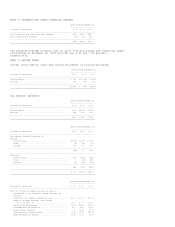 383
383 -
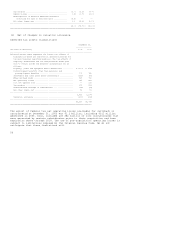 384
384 -
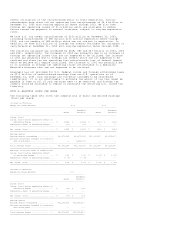 385
385 -
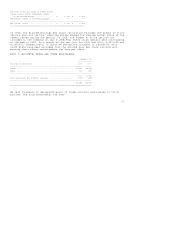 386
386 -
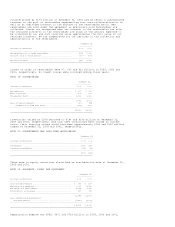 387
387 -
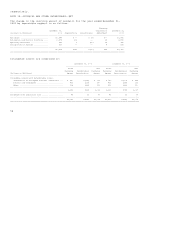 388
388 -
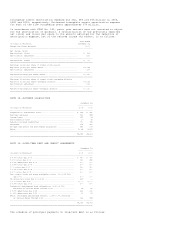 389
389 -
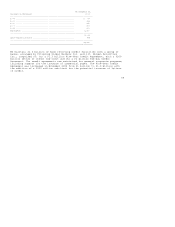 390
390 -
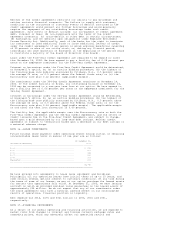 391
391 -
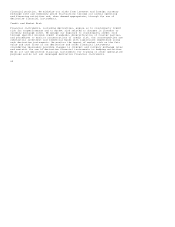 392
392 -
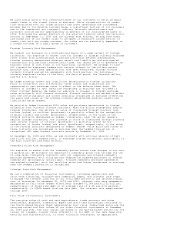 393
393 -
 394
394 -
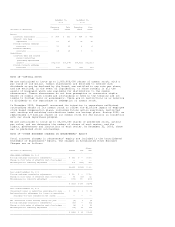 395
395 -
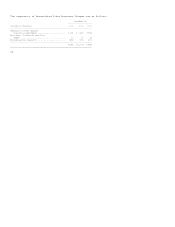 396
396 -
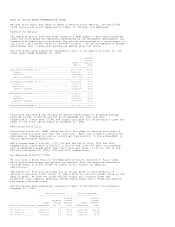 397
397 -
 398
398 -
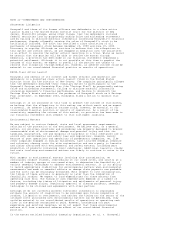 399
399 -
 400
400 -
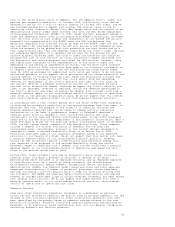 401
401 -
 402
402 -
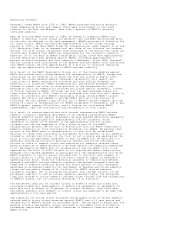 403
403 -
 404
404 -
 405
405 -
 406
406 -
 407
407 -
 408
408 -
 409
409 -
 410
410 -
 411
411 -
 412
412 -
 413
413 -
 414
414 -
 415
415 -
 416
416 -
 417
417 -
 418
418 -
 419
419 -
 420
420 -
 421
421 -
 422
422 -
 423
423 -
 424
424 -
 425
425 -
 426
426 -
 427
427 -
 428
428 -
 429
429 -
 430
430 -
 431
431 -
 432
432 -
 433
433 -
 434
434 -
 435
435 -
 436
436 -
 437
437 -
 438
438 -
 439
439 -
 440
440 -
 441
441 -
 442
442 -
 443
443 -
 444
444
 |
 |
We continually monitor the creditworthiness of our customers to which we grant
credit terms in the normal course of business. While concentrations of credit
risk associated with our trade accounts and notes receivable are considered
minimal due to our diverse customer base, a significant portion of our customers
are in the commercial air transport industry (aircraft manufacturers and
airlines) accounting for approximately 12 percent of our consolidated sales in
2003. Following the abrupt downturn in the aviation industry after the terrorist
attacks on September 11, 2001 and the already weak economy, we modified terms
and conditions of our credit sales to mitigate or eliminate concentrations of
credit risk with any single customer. Our sales are not materially dependent on
a single customer or a small group of customers.
Foreign Currency Risk Management
We conduct our business on a multinational basis in a wide variety of foreign
currencies. Our exposure to market risk for changes in foreign currency exchange
rates arises from international financing activities between subsidiaries,
foreign currency denominated monetary assets and liabilities and anticipated
transactions arising from international trade. Our objective is to preserve the
economic value of cash flows in non-functional currencies. We attempt to have
all transaction exposures hedged with natural offsets to the fullest extent
possible and, once these opportunities have been exhausted, through foreign
currency forward and option agreements with third parties. Our principal
currency exposures relate to the Euro, the British pound, the Canadian dollar,
and the U.S. dollar.
We hedge monetary assets and liabilities denominated in foreign currencies.
Prior to conversion into U.S dollars, these assets and liabilities are
remeasured at spot exchange rates in effect on the balance sheet date. The
effects of changes in spot rates are recognized in earnings and included in
Other (Income) Expense. We hedge our exposure to changes in foreign exchange
rates principally with forward contracts. Forward contracts are marked-to-market
with the resulting gains and losses similarly recognized in earnings offsetting
the gains and losses on the foreign currency denominated monetary assets and
liabilities being hedged.
We partially hedge forecasted 2004 sales and purchases denominated in foreign
currencies with currency forward contracts. When the dollar strengthens against
foreign currencies, the decline in value of forecasted foreign currency cash
inflows (sales) or outflows (purchases) is partially offset by the recognition
of gains (sales) and losses (purchases), respectively, in the value of the
forward contracts designated as hedges. Conversely, when the dollar weakens
against foreign currencies, the increase in value of forecasted foreign currency
cash inflows (sales) or outflows (purchases) is partially offset by the
recognition of losses (sales) and gains (purchases), respectively, in the value
of the forward contracts designated as hedges. Market value gains and losses on
these contracts are recognized in earnings when the hedged transaction is
recognized. All open forward contracts mature by December 31, 2004.
At December 31, 2003 and 2002, we had contracts with notional amounts of $641
and $1,203 million, respectively, to exchange foreign currencies, principally in
the Euro countries and Great Britain.
Commodity Price Risk Management
Our exposure to market risk for commodity prices arises from changes in our cost
of production. We mitigate our exposure to commodity price risk through the use
of long-term, firm-price contracts with our suppliers and forward commodity
purchase agreements with third parties hedging anticipated purchases of several
commodities (principally natural gas). Forward commodity purchase agreements
are marked-to-market, with the resulting gains and losses recognized in earnings
when the hedged transaction is recognized.
Interest Rate Risk Management
We use a combination of financial instruments, including medium-term and
short-term financing, variable-rate commercial paper, and interest rate swaps
to manage the interest rate mix of our total debt portfolio and related overall
cost of borrowing. At December 31, 2003 and 2002, interest rate swap agreements
designated as fair value hedges effectively changed $1,189 and $1,132 million,
respectively, of fixed rate debt at an average rate of 6.45 and 6.51 percent,
respectively, to LIBOR based floating rate debt. Our interest rate swaps mature
through 2007.
Fair Value of Financial Instruments
The carrying value of cash and cash equivalents, trade accounts and notes
receivables, payables, commercial paper and short-term borrowings contained in
the Consolidated Balance Sheet approximates fair value. Summarized below are the
carrying values and fair values of our other financial instruments at December
31, 2003 and 2002. The fair values are based on the quoted market prices for the
issues (if traded), current rates offered to us for debt of the same remaining
maturity and characteristics, or other valuation techniques, as appropriate.
